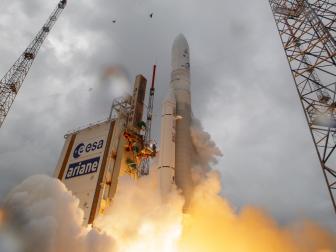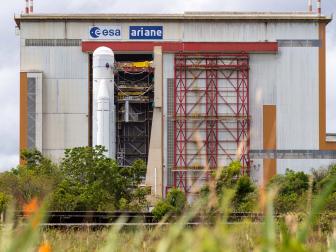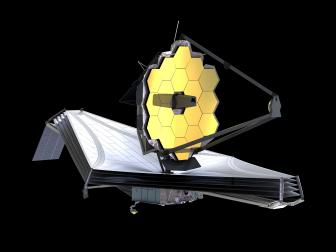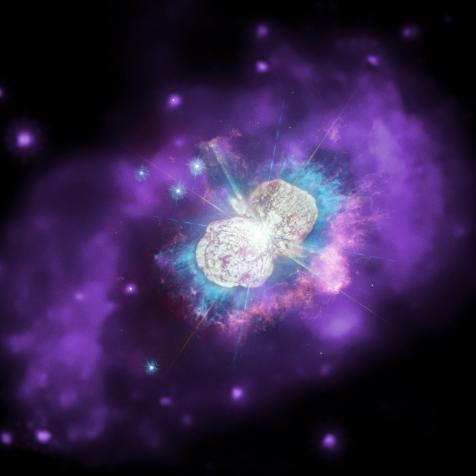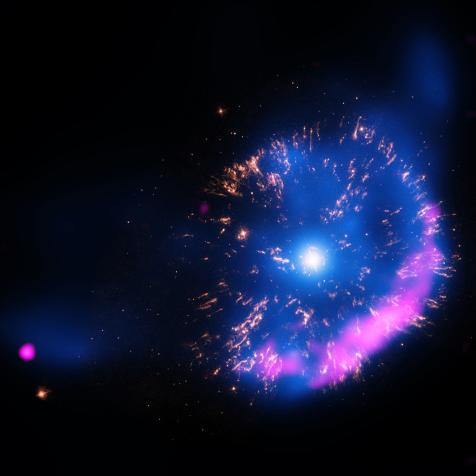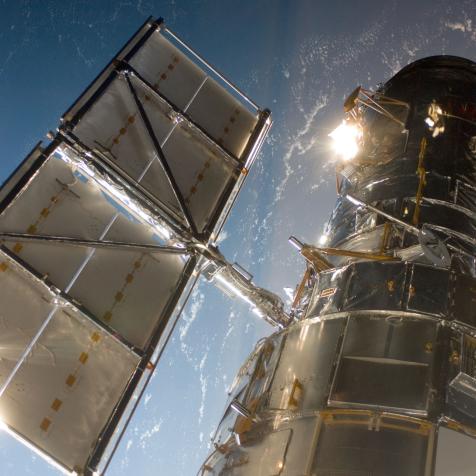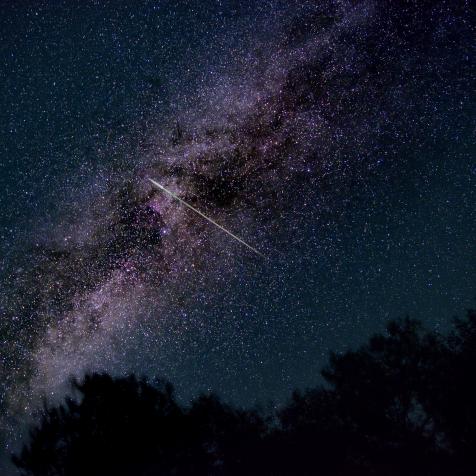
Why NASA’s New Super-Telescope Can’t See Visible Light

Even though NASA’s latest flagship instrument, the James Webb Space Telescope, is touted as the successor to the venerable Hubble, it has one major difference.
The Hubble observed mainly in the visible portion of the electromagnetic spectrum, the same kind of light that we see with our eyes. But the James Webb will observe almost exclusively in the infrared, like a giant space-based night-vision camera.
Why? Because science. The James Webb has three main science goals, and they all rely on infrared light:
1) The Birth of Stars
It’s tough to make a star. You have to take a truly massive amount of gas and dust, which is perfectly happy just sitting there in interstellar space minding its own business and convince it to squish down into a tiny little ball. The layers and layers of dust and gas surrounding a new star make it difficult for astronomers to see what the heck is going on because all that gunk is really good at blocking visible light. But thankfully, just like night-vision goggles can pierce through walls, infrared light can sail through the mist, giving the James Webb an unprecedented view of how stars and their planetary systems form.
2) Exoplanets
The James Webb will be an exoplanet hunter extraordinaire, complementing ground-based observatories and the TESS satellite, which is dedicated to exoplanet detection. With its infrared abilities, the James Webb will be able to watch as starlight filters through alien atmospheres. Molecules in those atmospheres will leave behind a tiny imprint in that starlight. And some of the most important molecules, like carbon dioxide and methane, leave those imprints in the infrared spectrum. Why are those molecules important? Because they might be signs of life.
JWST Journey to Space
James Webb Space Telescope Successfully Reached Its Final Destination
Nearly a month after the James Webb Space Telescope launched from French Guiana on December 25, the telescope has reached its final destination–almost a million miles from Earth.
The James Webb Space Telescope Launches!
Finally! It was initially proposed way back in 1998 and named the James Webb Space Telescope in 2002. After a decade of delays and over 10 billion dollars past its original budget, NASA’s next great observatory finally launched from the European Space Agency’s Guiana Space Centre in South America.
All Aboard the James Webb Space Telescope!
All hail the James Webb, the ultra-powerful super-telescope for the next generation. Or for about 5-10 years when its fuel runs out.
3) The First Galaxies
Astronomers have no observations of the first stars and galaxies to appear on the cosmic scene. Those galaxies formed when our universe was a small fraction of its current age, over 13 billion years ago. One of the reasons astronomers haven’t observed that important epoch is that the light from those first galaxies is so incredibly faint that it’s difficult to detect. That’s why the James Webb has such a gigantic mirror, to help it see those dim objects.
But the other problem is the expansion of the universe. As light passes through the cosmos, the expansion of the universe stretches it, causing the light to shift down into longer and longer wavelengths. The first galaxies are so far away that even though they emitted visible light, that light has been traveling for so long that it’s now in the infrared portion of the electromagnetic spectrum. In other words, those galaxies are literally invisible to us now, and can only be observed in infrared…which is exactly what the James Webb will do.
Dive Deeper into the Universe
Journey Through the Cosmos in an All-New Season of How the Universe Works
The new season premieres on Science Channel and streams on discovery+.



































































